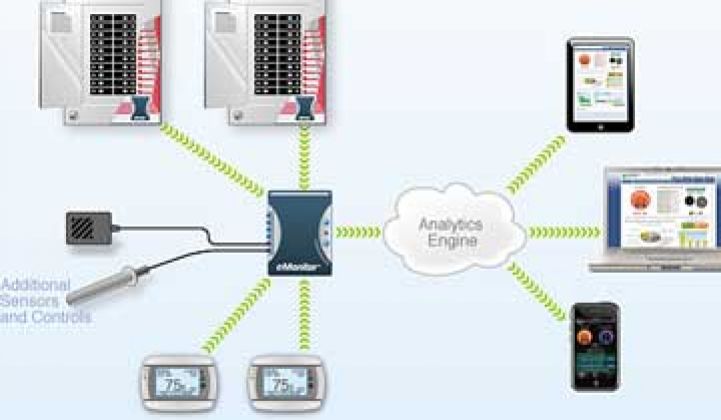When members of the Consolidated Edison Green Team hit the streets to talk to small businesses about free energy efficiency programs from the utility, they go in badge first.
Small business owners are exceedingly wary of anyone trying to sell them energy products, even if the person is carrying valid credentials from a utility. “One of the biggest hurdles we have is to get the customer to truly believe we are Con Edison,” said Esteban Vasquez, Manger of Small Business Direct Install Program for Con Ed. “Some people have made copies of our badge.”
Enabling energy efficiency in the small commercial market has been difficult for not just Con Edison, but for utilities across the U.S. The market is fragmented, and business owners are not facilities managers or sustainability officers -- they’re busy trying to keep their doors open and their customers happy.
Because of the challenges, energy efficiency programs for small businesses -- whether they are clothing or convenience stores -- are few and far between compared to their C+I counterparts. In Con Edison territory alone, there are some 250,000 businesses that are eligible for their programs, yet only a few hundred currently participate. Vasquez’s team offers free upgrades for items like CFLs and covers 70 percent of many other energy efficiency upgrades.
The solutions to curb energy use in small businesses and to entice them to take part in demand response programs will require on-the-ground efforts, plug-and-play technologies and a lot of elbow grease. “It’s a brand new market,” said Vasquez. “It’s really an underserved market for energy efficiency.”
But solutions are starting to trickle into the market from startups and utilities alike. Companies like ThinkEco and Powerhouse Dynamics offer simpler solutions for time-strapped businesses than what’s available to the large commercial sector. “What we’re seeing is renewed interest in the part of some smaller businesses, like restaurants,” said Martin Flusberg, CEO of Powerhouse Dynamics. “They’re getting around to energy finally. Until now, they’ve thought of it as an uncontrollable cost.”
Powerhouse Dynamics just released its circuit-level energy management technology to small businesses, with a focus on restaurants, small office buildings and small chains. For small chains, the corporate back office can watch the energy usage and then send out alerts to store managers when something is amiss, like high energy use outside of business hours or alerts when equipment is faulty. Sila Kiliccote, Commercial Sector Demand Response Lead at Lawrence Berkeley National Lab, said that mass adoption of energy efficiency upgrades and programs in small businesses will probably require individual solutions for each sector. Flusberg said the return on investment is relatively quick for customers so far, less than a year, no matter what sector, but he acknowledged that the business case is easier in certain industries. Restaurants in particular have very high energy usage compared to other businesses with similar square footage.
ThinkEco, which provides smart plugs called modlets, is also targeting small businesses to help them monitor energy use. But they’re also talking to equipment manufacturers about having the technology installed in office equipment like copiers and computers.
But everyone acknowledges that it’s slow work to penetrate the markets. “It’s a tough market to get to,” said Flusberg, which is why his company is looking towards corporate offices that can then install the service at multiple locations.
In Con Ed’s territory, success has largely been due to word of mouth. The Green Team not only pounds the pavement, but also attends local business association meetings. The first two years were as much about building awareness as they were about delivering solutions. “It takes an army,” said Vasquez, who noted that Con Edison had more than 100 people working on efficiency in the small business sector. Besides good will, he also noted that larger projects, even if Con Ed pays for part of them, might be outside the realm of possibility for cash-strapped businesses coming out of the recession. But as lending practices improve, so will investment in efficiency.
For certain markets, like restaurants and convenience stores, having a way to monitor their equipment is also a selling point. Flusberg said that many small chains wanted to know which pieces of equipment, such as freezers, perform better than others when they need to make upgrades. By having energy management equipment in place, they can get that information. Monitoring the energy in a store also allows for corporate to set up incentives for store managers to compete to improve efficiency.
“It’s going to come down to awareness and education with this biz segment,” said Vasquez. “We’re slowly chipping away.”



